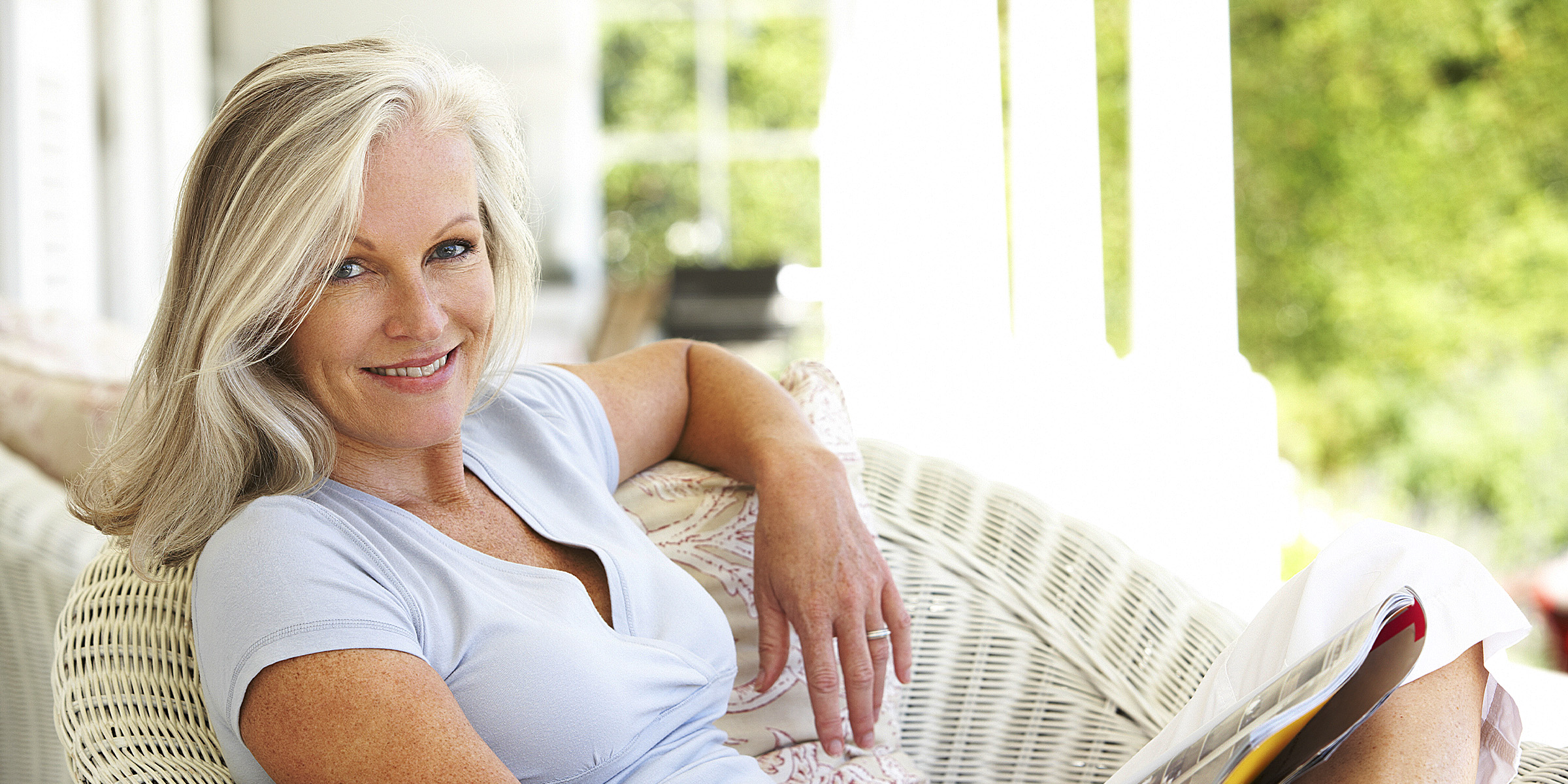
10 Effective Steps to Care for Aging Skin
Your skin changes with age — but that doesn't mean you have to settle for dryness or dullness. These ten steps can help keep your skin looking and feeling its best at any age.
As skin matures, it becomes more prone to dryness, sensitivity, and visible signs of aging. The good news — with the right habits, it's possible to maintain a healthy, radiant complexion at any age.

An older womamn | Source: Pexels
1. Start With a Gentle Cleanse
Washing your face once a day with a mild, non-drying cleanser can help remove dirt and oil without compromising your skin's natural barrier. Harsh soaps tend to strip moisture, leaving skin tight and dehydrated — exactly what aging skin doesn't need.

A close-up of an older woman's face | Source: Pexels
2. Choose Warm Water Over Hot
Hot water may feel relaxing, but it quickly removes natural oils from the skin, worsening dryness. Switching to lukewarm water can help preserve your skin's moisture balance.
3. Use a Soft Cloth Instead of Abrasive Tools
Skip the buff puffs and stiff brushes. These tools can irritate aging skin. Instead, wash gently using a soft cloth to avoid unnecessary friction or damage.
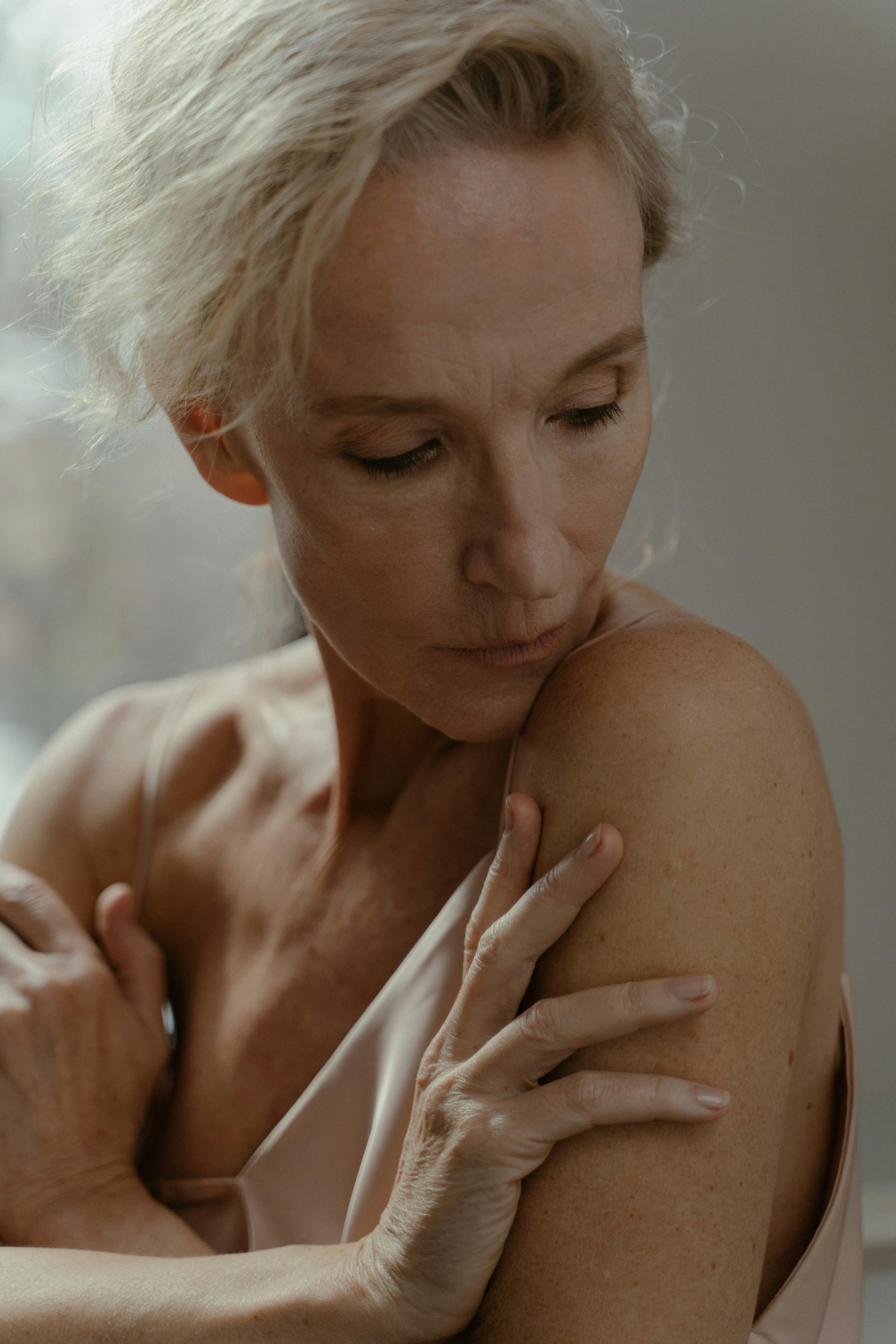
An older womamn | Source: Pexels
4. Keep Showers and Baths Short
Long, steamy showers might be tempting, but limiting them to five to ten minutes can help maintain your skin's hydration. As skin gets older, it may not need daily bathing. Less frequent, shorter showers can reduce water loss and irritation.
5. Don't Towel Off Completely
After bathing, lightly pat your skin dry but leave it slightly damp. Applying moisturizer while your skin is still moist helps lock in hydration more effectively.
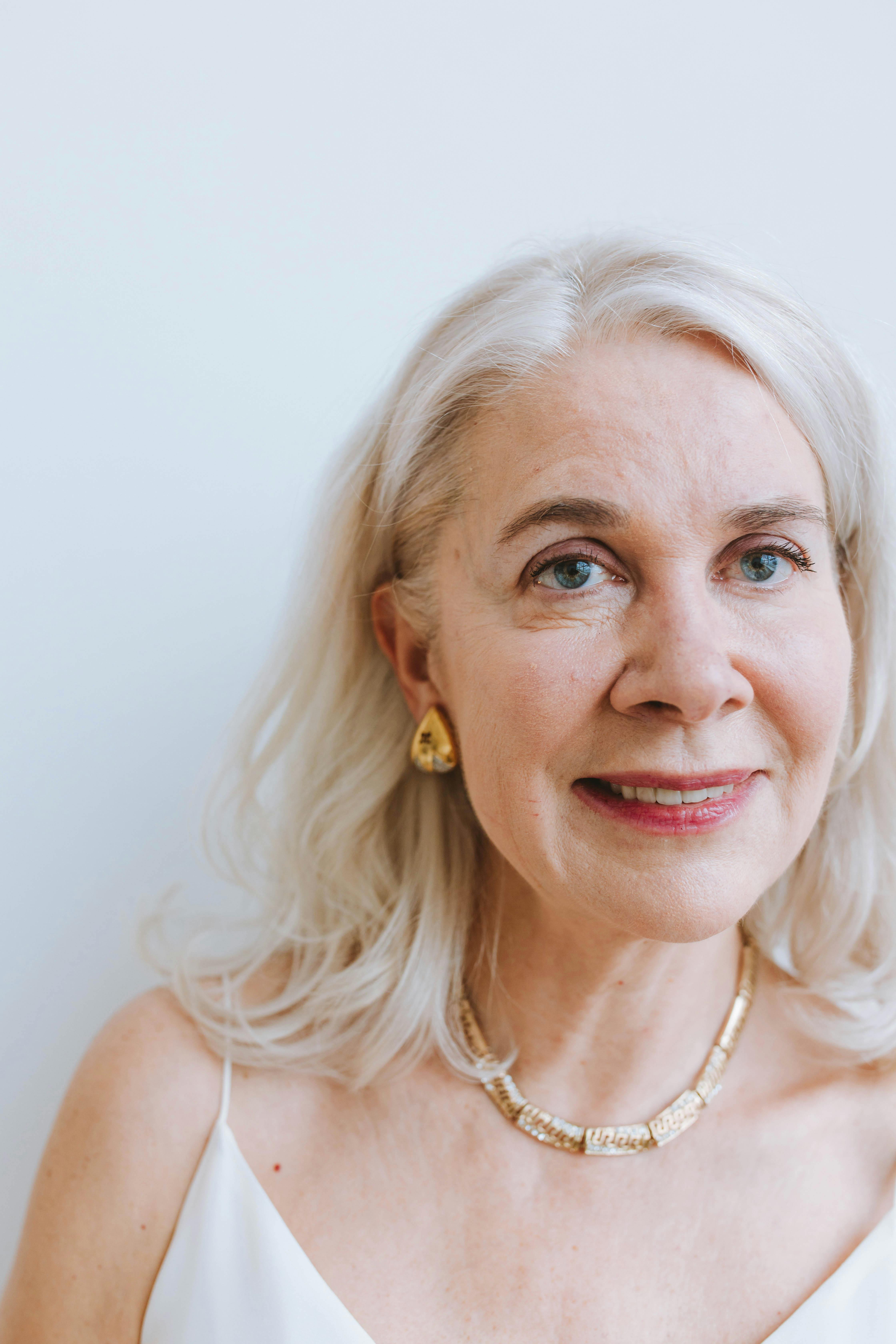
A smiling older woman | Source: Pexels
6. Moisturize Daily — And Then Some
Dryness becomes more common with age, so regular moisturizing is essential. Reach for a fragrance-free product that includes ingredients like hyaluronic acid or glycerin. Apply it immediately after bathing and any time your skin feels dry to keep it supple and smooth.

A close-u of an older woman's face | Source: Pexels
7. Wear Sunscreen Every Single Day
UV exposure is a major contributor to visible aging and skin cancer. Even on cloudy or cold days, broad-spectrum sunscreen with SPF 30 or higher helps protect collagen, elastin, and your skin's DNA. Make it a non-negotiable part of your morning routine.
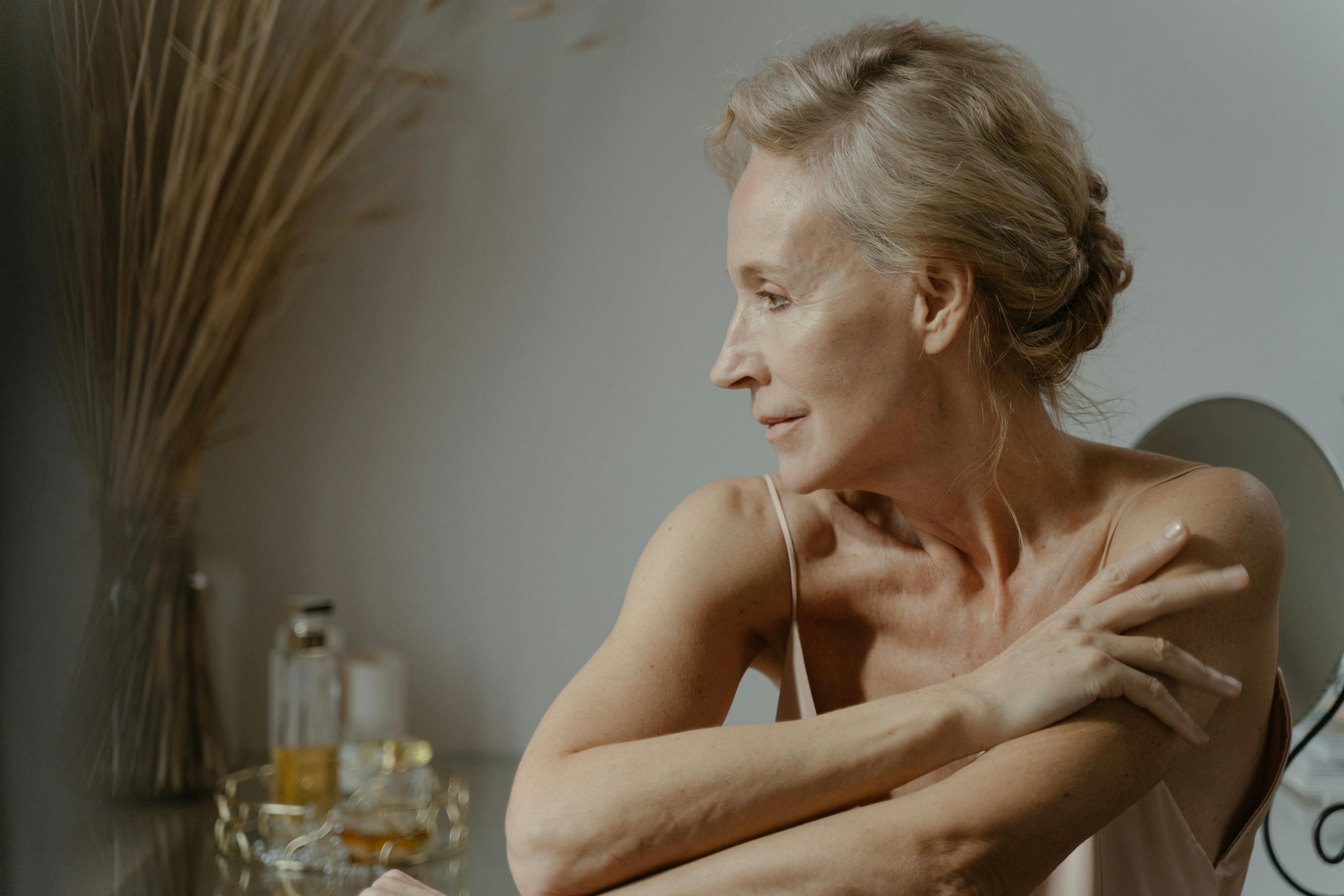
An older woman | Source: Pexels
8. Incorporate Antioxidants Into Your Routine
Topical antioxidants, especially vitamin C, defend skin against damage from environmental stressors like pollution and UV rays. They also brighten the complexion, reduce dark spots, and help create a more even skin tone by minimizing excess pigment production.
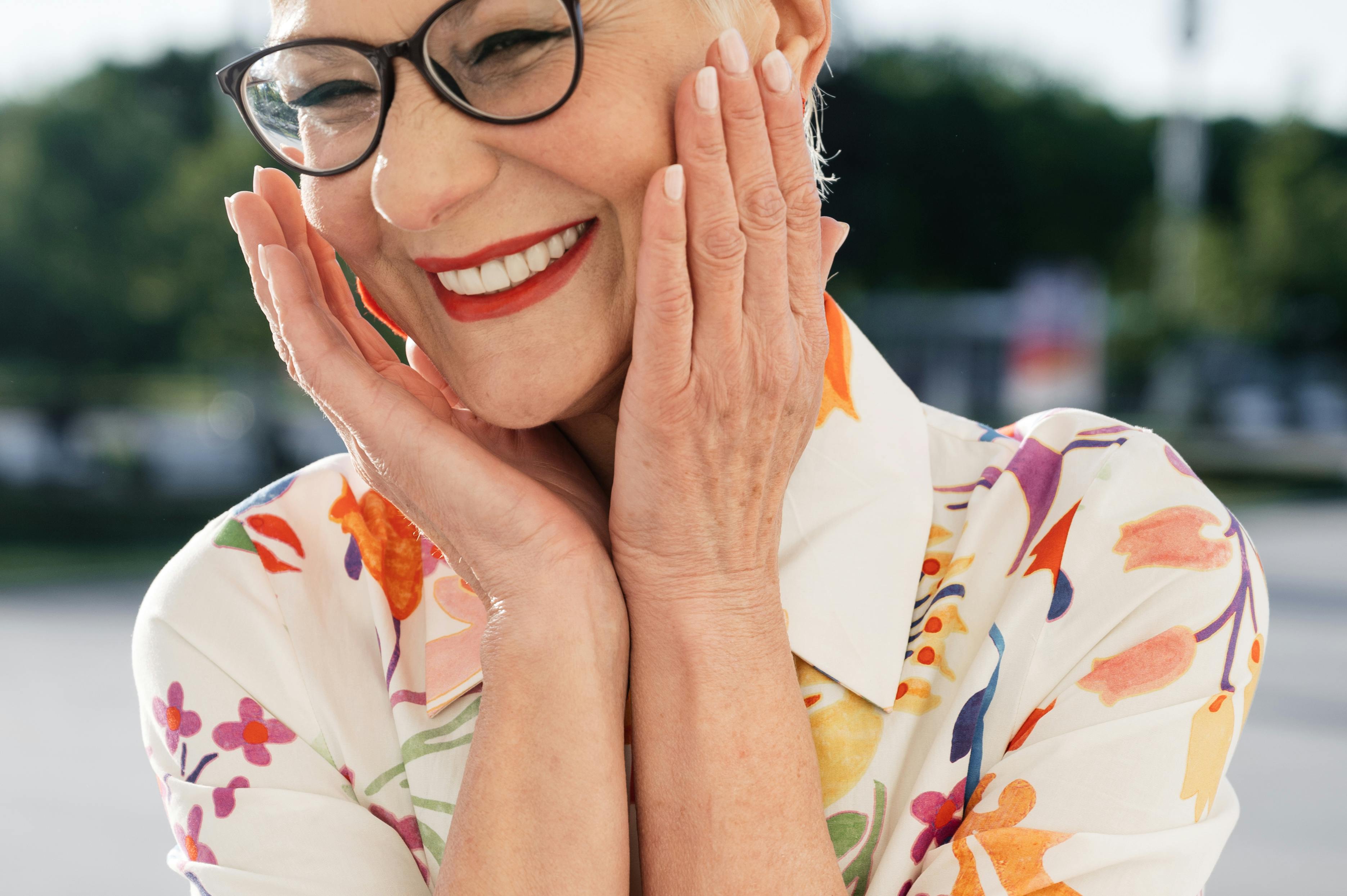
A smiling woman touching her face | Source: Pexels
9. Exfoliate With Care
Removing dead skin cells once or twice a week can revive dull, aging skin — but skip the scrubs.
Gentle chemical exfoliants, such as retinoids, alpha or beta hydroxy acids, and salicylic acid, are more effective and less damaging than physical exfoliation. Be sure to follow product directions to avoid irritation or overuse.
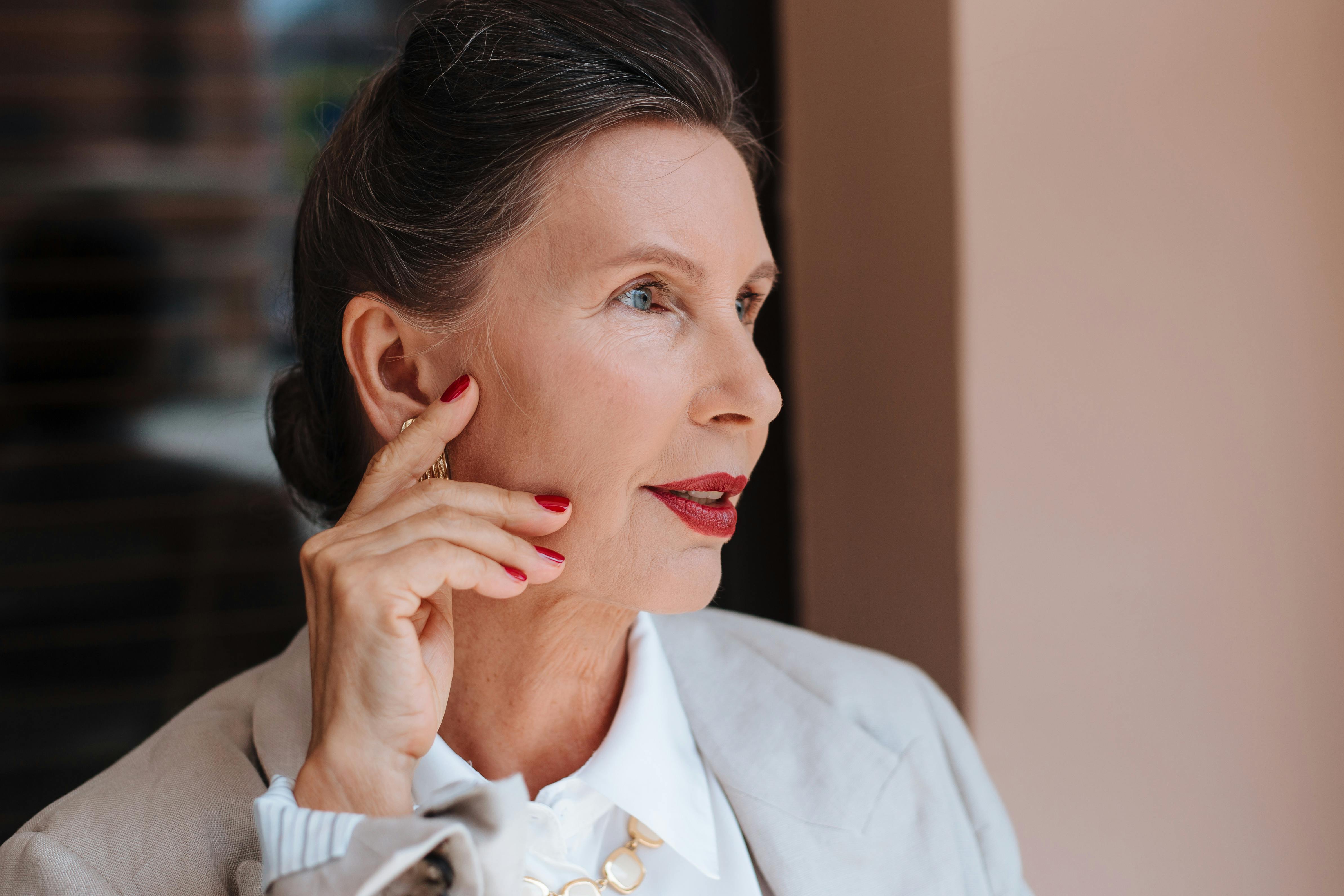
A woman gently touching her face | Source: Pexels
10. Combat Dry Air With a Humidifier
Indoor heating and air conditioning often dry out the air, which can dehydrate your skin. Running a humidifier adds moisture back into your environment, helping skin feel less itchy and tight.
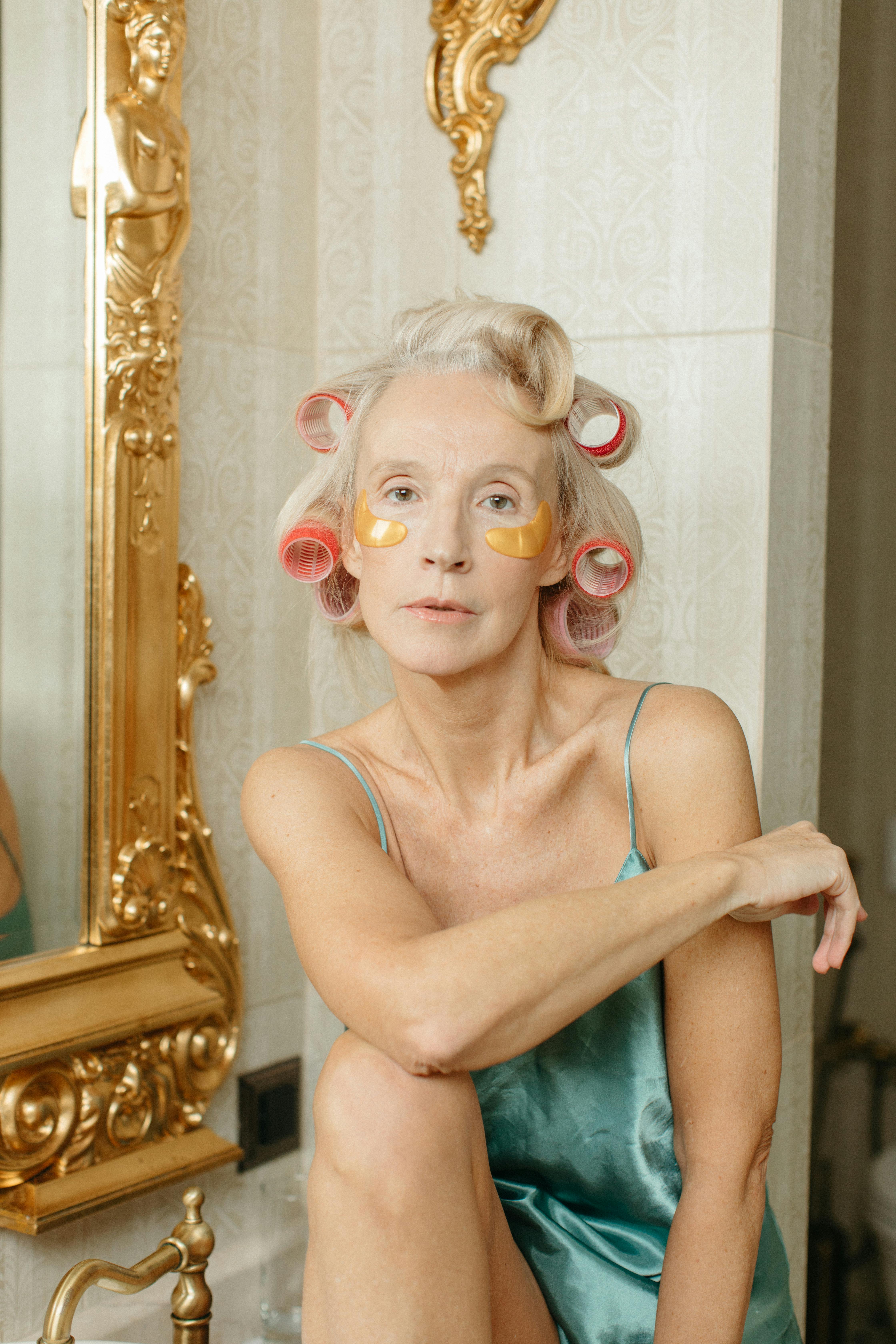
an older woman | Source: Pexels
Caring for aging skin doesn't require an elaborate routine — just a few intentional steps can make a noticeable difference over time.
And if you're interested in more ways to support your well-being beyond skincare, take a look at the surprising benefits Pilates offers for women over 60.
